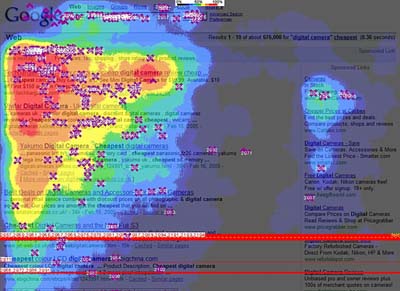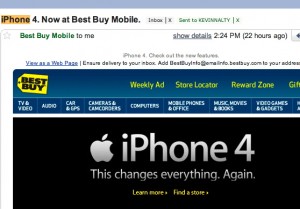 The more we surf online video the more savvy we become about content versus advertising.
The more we surf online video the more savvy we become about content versus advertising.
A marketer recently told me he was pleased by the impressions he got from a YouTube homepage advertising buy, but…” I finished his sentence for him.. “your featured video didn’t get a lot of views.”
I told him we’ve been trained that the YouTube featured video is an advertisement, and he said he was working on ways to produce a more provocative headline or thumbnail. This “learned ad blindness” (I just coined that) was true with Revver ads, where virgin viewers would click the end-frame ad out of curiosity while the regulars learned to move to the next video. Revver is now adopting overlays jam packed with what appears to be Google Adsense Ads. Meanwhile, Adsense itself is under performing. Jason Lee Miller of WebProNews wrote recently about performance declines of Google Adsense, and one of his theories is:
“People are ignoring ads at a higher rate, and this has been evidenced by eye-tracking studies, especially when the ads appear in the places they expect them to appear.” (Note: to reinforce Miller’s point, I’ve displayed an image tracker of where eyes go when viewing a Google search-results page… hot in the top of organic area and rather cold on the ads).
So what’s the solution? Is it constant rotation of ads so they masquerade as content or perpetually innovative ways to interrupt, arouse or tantelize? YouTube’s “videos being watched right now” is a combination of sponsored videos and popular ones. They’ve changed the name of this section several times, but I believe it remains an advertorial blend.
 That’s not the answer long term. Your most trusted sources of media (television, print, radio, web) usually make it abundantly clear what’s an advertisement and what’s content. Google pioneered this delineation by giving a color to ads while some engines continue to advantage advertisers in the “organic” listings with something called “paid inclusion” that creeps me out. The “advertorial” game, where advertisers sponsor what appears to be objective articles, is for the bottom feeders.
That’s not the answer long term. Your most trusted sources of media (television, print, radio, web) usually make it abundantly clear what’s an advertisement and what’s content. Google pioneered this delineation by giving a color to ads while some engines continue to advantage advertisers in the “organic” listings with something called “paid inclusion” that creeps me out. The “advertorial” game, where advertisers sponsor what appears to be objective articles, is for the bottom feeders.
My first job after college was for a small Georgetown newspaper where the editor literally put a small white fence between the editorial and advertising department. I proudly stood on the content side, and the newspaper went bankrupt in 9 months. It was what prompted me to attend business school and move to the marketing side. I’d need to shower more frequently, but I’d at least have some control of my destiny.
The solution to “learned ad blindness” (copyright Kevin Nalts) is making ads that appeal to viewers and targeting people based on relevancy. If I’m in the market for a car, I want your car ad. If I’m not, it better have dancing clowns, hot models and site gags. If watching videos about the new overpriced talking parrot toy in late November, I’m probably ready for a 20% Toys-R-Us ad. See my next post (Cherry Chocolate Rain) for an even better example of when advertising does indeed become content.
Initially advertisers were terrified by technology that would block ads — from FireFox plugins to TiVo remotes. I’d content the greater barrier is the technology of the human mind, which learns quickly to discriminate between valued content and noise.
Like my old boss used to say, “even an amoeba learns by repetition.”





